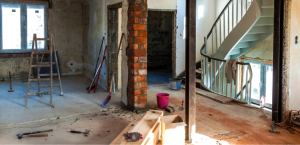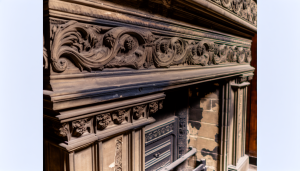Toronto, Ontario — Renovating historic homes presents a unique set of challenges and rewards, particularly when it comes to updating the plumbing system. These ventures demand a delicate balance: preserving the home’s character while ensuring modern functionality and efficiency. Here’s how to navigate the complex terrain of renewing the plumbing in your historic gem.
1. Understand the Current System
The first step is to thoroughly assess the existing plumbing. Many historic homes have pipes made from materials now considered unsafe or inefficient, such as lead or galvanized steel. Understand what you’re working with by possibly hiring a professional who specializes in historic homes to evaluate your system’s health, adherence to current codes, and efficiency.
2. Research and Honor Historical Integrity
Before making changes, research your home’s architectural era. Understanding the original materials and methods used in your home’s plumbing can guide you in making renovations that respect its historical integrity. Consider how changes might affect the home’s architecture and aesthetics. While modern PVC pipes are efficient, they may not suit your home’s period. Sometimes, replica materials offer modern functionality with a traditional look.
3. Modern Functionality Meets Historical Aesthetics
Striking a balance between updating the plumbing for functionality and maintaining the home’s historic character is key. Use modern materials that echo the look of the originals. For example, PEX piping offers a flexible and durable solution that can be threaded through walls and floors with minimal disruption, preserving plaster and masonry work. For visible fixtures, consider reproduction or salvaged pieces that match the period.
4. Navigate Codes and Regulations
Upgrading plumbing in a historic home often means navigating a maze of building codes and historic preservation standards. Engage with local historic preservation societies and municipal building departments early in your planning process. They can provide guidelines and might offer grants or tax incentives for historically sensitive renovations. Always ensure your plans comply with both local regulations and best practices for historic preservation.
5. Plan for Efficiency and Sustainability
Upgrading your home’s plumbing offers the perfect opportunity to incorporate water-saving technologies. Low-flow toilets, showerheads, and faucet aerators can significantly reduce water usage without compromising the home’s aesthetic. Consider installing a greywater system or rainwater catchment for garden irrigation, keeping sustainability in mind while honoring your home’s heritage.
6. Hiring the Right Professionals
Perhaps the most crucial step is choosing contractors who specialize in historic homes. They can navigate the intricacies of working within a historic structure, preserving its integrity while upgrading its systems. Look for professionals with experience in both modern plumbing techniques and historic preservation, ensuring they understand the importance of maintaining your home’s character.
7. Document Everything
As you navigate the renewal process, keep detailed records of all decisions, purchases, and changes made. This documentation can be invaluable for future maintenance, resale, or further renovation projects. It also serves as a historical record of the care taken to preserve and update the home.
Renewing the plumbing in a historic home is no small task. It requires careful planning, understanding of historical significance, and a commitment to preserving the essence of the home while ensuring it meets modern standards of safety and comfort. With thoughtful approach and expert help, you can ensure your historic home remains both a testament to the past and a comfortable, functional space for the future.







